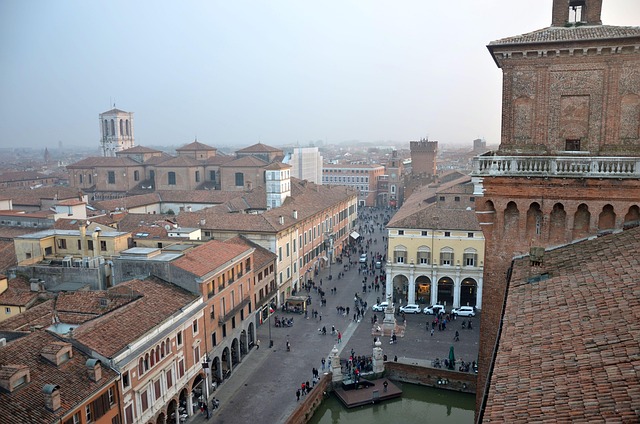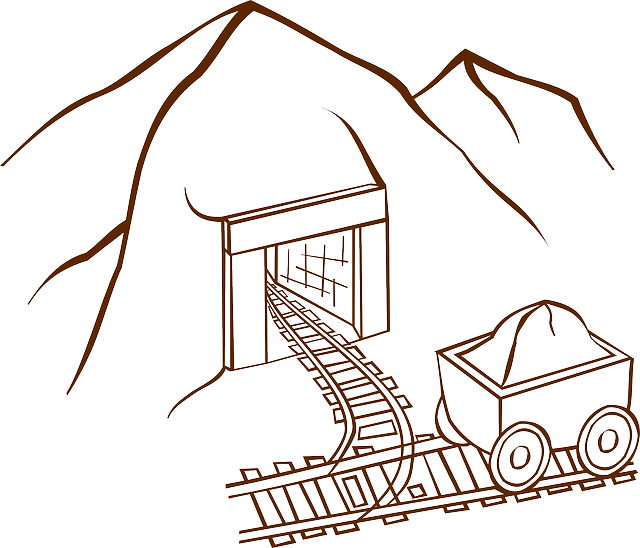The mid-19th century gold discovery in Lane County, Oregon, sparked a transformative period of gold rush economics that dramatically reshaped the region's social dynamics and economy. The influx of prospectors led to rapid urban development, the establishment of diverse mining communities, and the growth of local businesses. This boom left an indelible mark on Lane County's history, fostering connections between various ethnic groups and creating a vibrant cultural tapestry. Despite intense pressure on resources and conflicts arising from rapid population growth, the gold rush laid the groundwork for the county's enduring economic diversity and innovation.
“Lane County, Oregon, experienced a transformative era during the mid-19th century gold rush, sparking an economic and cultural revolution. The arrival of gold prospectors brought a surge in population, transforming the region from a quiet agricultural hub into a bustling metropolis. This article explores the profound changes Lane County underwent, from its initial economic boom to the diverse social dynamics and infrastructure development fueled by the gold rush. We delve into the challenges faced and the lasting legacy left behind, shedding light on the significant impact of this historical event on modern-day Lane County.”
- The Arrival of Gold: A Spark in Lane County
- Economic Boom and its Impact on the Region
- Social Dynamics: A Melting Pot of Cultures
- Infrastructure Development: Building a New Metropolis
- Challenges and Conflicts: Struggles of the Gold Rush Era
- Legacy: Lane County's Shaping by Gold Rush History
The Arrival of Gold: A Spark in Lane County

The discovery of gold in Lane County, Oregon, in the mid-19th century ignited a frenzy that would forever alter the region’s cultural and economic landscape. This sudden influx of prospectors brought a rapid transformation to the area, previously known for its lush forests and peaceful communities. The promise of untapped riches attracted folks from all walks of life, each hoping to strike it big in this promising new frontier.
The gold rush economics that followed reshaped Lane County’s society. As miners poured in, small towns sprang up, and existing settlements expanded. The once-quiet agricultural communities evolved into bustling hubs of commerce and industry, catering to the needs of the growing population. This period witnessed a diverse mix of individuals from various backgrounds, all united by their quest for gold and the potential for a better life.
Economic Boom and its Impact on the Region

The discovery of gold in Lane County, Oregon, during the mid-19th century sparked a frenzy that forever altered the region’s economic landscape. This sudden influx of prospectors and settlers brought an unprecedented surge in population, leading to a rapid development of towns and cities across the county. The gold rush era saw the establishment of vibrant mining communities, each with its own unique character, from the bustling port town of Eugene to the quaint settlements nestled among the mountains.
The economic boom resulting from the gold rush had far-reaching consequences. Local businesses flourished as they supplied essential goods and services to the growing population. Agriculture expanded to meet the demands of a thriving community, while new infrastructure projects, such as roads and bridges, were developed to facilitate trade and transportation. This period of prosperity laid the foundation for Lane County’s economic strength, shaping its future industries and contributing to its reputation as a diverse and prosperous region in Oregon.
Social Dynamics: A Melting Pot of Cultures

When the gold rush hit Lane County, Oregon in the mid-19th century, it brought about a dramatic transformation in the region’s social dynamics. The influx of prospectors from diverse backgrounds created a unique cultural melting pot. These pioneers, driven by the allure of wealth, comprised a mix of European Americans, Asian miners, and Indigenous people seeking economic opportunities. The gold rush economics fueled interactions and exchanges between these groups, leading to the emergence of a vibrant, albeit temporarily formed, community.
The diverse population dynamically shaped Lane County’s social landscape. Cultural practices, traditions, and perspectives intertwined as people from different walks of life worked side by side in mines and settlements. This period witnessed the breaking down of ethnic and cultural barriers as shared experiences and challenges fostered connections. The gold rush, thus, acted as a catalyst for cultural exchange, leaving an indelible mark on the county’s social history.
Infrastructure Development: Building a New Metropolis

When the gold rush hit Lane County, Oregon in the mid-19th century, it sparked a period of rapid infrastructure development. The influx of prospectors and settlers led to the establishment of new towns, roads, and transportation networks. The economic boom fueled construction projects, transforming the landscape from rural farms and forests into a bustling metropolis. New businesses, including hotels, saloons, and shops, popped up to cater to the growing population, reflecting the cultural shift from small-scale agriculture to a more diverse and dynamic urban center.
This infrastructure development wasn’t just about physical changes; it reflected deeper cultural transformations within Lane County. The gold rush attracted a diverse mix of people from various backgrounds, leading to an exchange of ideas and traditions. The once-quiet county became a melting pot of cultures, with influences from around the world shaping its social fabric. This new metropolis was not only built on the back of gold mining but also on the principles of diversity, innovation, and adaptability—characteristics that continue to define Lane County’s identity today.
Challenges and Conflicts: Struggles of the Gold Rush Era

The Lane County Oregon gold rush brought about significant cultural shifts, but it was not without its challenges and conflicts. The sudden influx of prospectors and settlers created intense pressure on local resources, straining the existing infrastructure and economy. Gold rush economics dominated the region, with many residents embracing the promise of quick wealth, leading to a surge in population and a corresponding demand for food, shelter, and services. This rapid growth outpaced the county’s ability to accommodate it, resulting in resource scarcity and rising tensions among inhabitants vying for limited supplies.
Conflicts arose from the competition for gold-mining claims and the struggle for control over water sources essential for both mining and agriculture. Tensions also escalated due to racial and ethnic disparities, with Native American tribes facing displacement and marginalization as white settlers encroached on traditional lands. Additionally, the harsh conditions and isolated locations of many mining sites led to health issues and social problems, further complicating the already challenging circumstances.
Legacy: Lane County's Shaping by Gold Rush History

The Lane County Oregon gold rush left an indelible mark on the region’s history, reshaping its economy and culture significantly. This period brought a surge in population as prospectors flocked to the area, leading to the rapid development of towns and communities. The gold rush economics fueled the local market, fostering entrepreneurship and diverse industries that supported the growing populace. Many historic sites and landmarks across Lane County bear witness to this era’s vibrant hustle and bustle, offering glimpses into the past that continue to captivate folks.
The cultural changes were profound as well. The influx of diverse individuals from various backgrounds contributed to a rich tapestry of traditions and customs. Mining camps became melting pots where people exchanged ideas, stories, and skills. This intermingling left a lasting legacy on the region’s identity, shaping its artistic expressions, culinary scenes, and community events even in the modern era.
